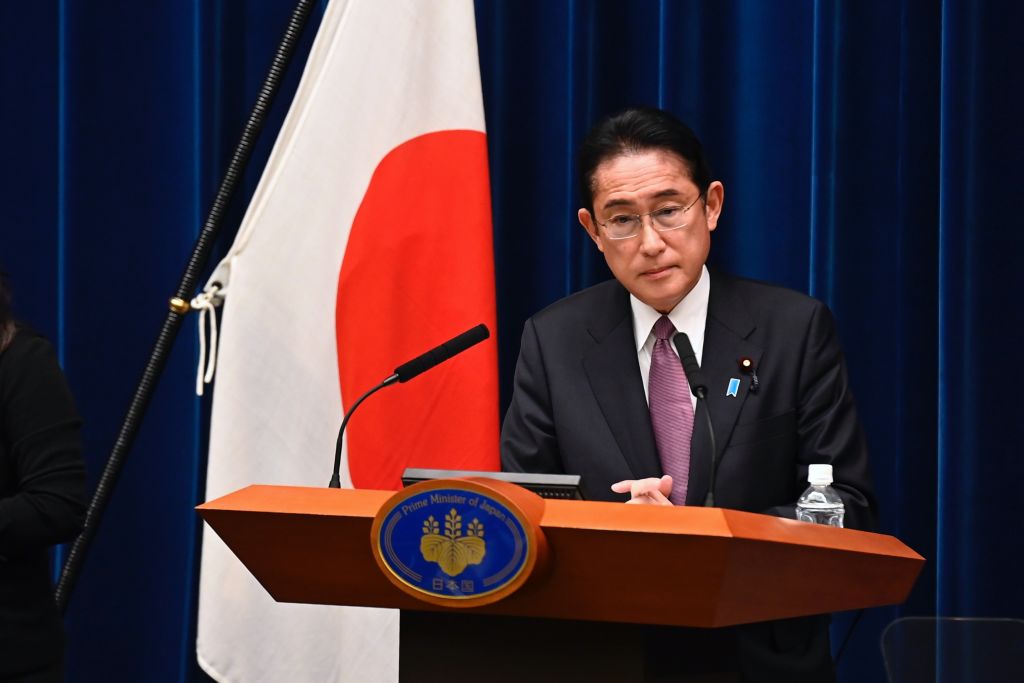When the Japanese government released its updated National Security Strategy in late December, headlines in the West described it as “historic,” noting it was the nation’s “biggest military build-up since World War II.” Although the NSS, along with two other defense planning documents released at the same time, does represent a considerable reorientation of Japan’s national security policy, it’s not a sudden shift. Rather, the Anpo San Bunsho—“three national security documents”—are the result of a years-long effort that reflect an increasing sense of urgency about the threat presented by China.
Japan issued a National Security Strategy in 2013, but since then the security environment has taken a turn for the worse. Over the last decade, Japan has faced Beijing ramping up its aggression in the East China Sea near the Senkaku Islands and its growing aggressiveness toward Taiwan, Chinese economic coercion in the the Indo-Pacific region and beyond, and renewed intensity in North Korea’s provocative actions. And in the early stages of revising the strategy, Japan witnessed Russia’s invasion of Ukraine and Moscow’s attempt to use the threat of nuclear weapons to intimidate not only Ukraine but also the countries in Europe that tried to support Ukraine.
These factors propelled domestic debate on issues that had been considered taboo due to their heightened political sensitivity in Japan—defense spending and acquiring counterstrike capabilities—but also on policies that require an all-of-government approach, like economic security, space, and cybersecurity. The resulting Anpo San Bunsho, which also includes the National Defense Strategy and the Defense Build-up Plan, seek to articulate how Tokyo will reorient its post-World War II security policy. Three elements of that reorientation stand out.
First, the 2022 NSS clearly identifies China as “an unprecedented and the greatest strategic challenge in ensuring the peace and security of Japan and the peace and stability of the international community, as well as in strengthening the international order based on the rule of law.” This is a notable departure from Tokyo’s past approach to China. Previously, Tokyo sought to strike a balance between calling China out for its assertive behavior while attempting to engage in other areas, particularly given the economic interdependence between the two countries. Even though the 2013 NSS described China’s behavior in the East and South China seas as “a source of serious concern to the international community, including Japan,” it stopped short of calling it a direct security threat to Japan. In addition, the level of detail the 2022 NSS gets into regarding China’s aggression in the Indo-Pacific region reflects grave concern.
Second, the three new documents collectively focus on historically sensitive issues, given Japan’s post-World War II pacifism. Japan publicly acknowledged for the first time that it would acquire counterattack capabilities, including the acquisition of long-range missiles such as Tomahawk. Even though the National Defense Strategy continues to emphasize that such a capability is for self-defense—indeed, the NDS takes pains to explain how this capability still fits within the principle that Japan would maintain an “exclusively defense-oriented” defense posture—the fact that Tokyo decided to pursue counterattack capabilities speaks volumes. Tokyo’s explicit interest in rehabilitating its indigenous defense industry and its commitment to essentially double its defense spending in the next five years is another example of shattering the politically self-imposed constraints in Japan’s postwar national security policy.
Third, the three documents collectively embrace a broader definition of national security. This rather overdue awareness is reflected in the emphasis the NSS places on economic security, as well as in the commitment to a more robust civil-defense synergy in the domains such as cybersecurity and space that is articulated in the NDS and the Defense Build-Up Plan. Notably, the NSS acknowledges the importance of economic security, emphasizing supply chain resilience, safeguarding the procurement of critical infrastructure, data and information protection, and industrial security.
As expected, the U.S. enthusiastically embraced the new strategy. When Japanese Prime Minister Fumio Kishida met with President Joe Biden in their first White House meeting on January 13, Biden “commended Japan’s bold leadership in fundamentally reinforcing its defense capabilities and strengthening diplomatic efforts” as the foundation to “bolster security across the Indo-Pacific and beyond and modernize the U.S.-Japan relationship for the 21st century.”
While the Anpo San Bunsho lay out a bold vision, Japan faces formidable challenges in implementation. For example, the NDS envisions a more integrated Japan Self-Defense Force (JSDF) that takes advantage of advanced capabilities (i.e. space, cyber, and unmanned), but the devil is in the details. The plan includes establishing a Permanent Joint Headquarters (PJHQ) that would support the JSDF chief of staff so that the chief can focus on his role as the principal military advisor to the defense minister and the prime minister. This is a long overdue step into the right direction—in fact, establishing the PJHQ was one of the important “lessons learned” from JSDF rescue-and-recovery operations in the aftermath of the 2011 earthquake. However, the specifics—everything from its location, personnel size, and structure—have become the source of the tug-of-war among the three JSDF services. As a result, the establishment of a PJHQ will likely be punted to at least 2024-25.
Moreover, some of the initiatives are easier said than done. Rehabilitating the indigenous defense industrial base takes more than the government merely investing more in national security-related research and development. One challenge to overcome is that the existing defense industries blame their inability to expand on lack of support from the government. Another is the tendency among the non-defense private sector to shy away from involvement in national security-related business. These are major reasons that Japan has accomplished less than it had hoped in the nine years since the government revised its principles of defense equipment and technology export under then-Prime Minister Abe in 2014.
Finally, there are domestic political considerations. The public approval ratings of the Kishida government nosedived when the prime minister abruptly announced late last fall—in the weeks leading up to the release of the NSS—that the defense budget increase would require a tax hike. The most recent poll released by Jiji Press indicates that the government’s approval rating remains at around 25 percent, while disapproval has climbed up to approximately 44 percent. Should it stay that way, Kishida may be forced to dissolve the House of Representatives and take the issue to the polls, exposing the government to the risk of having to slow the pace of increased defense spending.
A great deal of enthusiasm surrounds Japan’s new strategy, and for a good reason. These documents symbolize the modernization of Japan’s national security policy, which was long overdue. However, whether the visions laid out in these documents—as commendable as they are—can be actualized in the proposed timeframe of the next five years remains anything but certain.






Please note that we at The Dispatch hold ourselves, our work, and our commenters to a higher standard than other places on the internet. We welcome comments that foster genuine debate or discussion—including comments critical of us or our work—but responses that include ad hominem attacks on fellow Dispatch members or are intended to stoke fear and anger may be moderated.
With your membership, you only have the ability to comment on The Morning Dispatch articles. Consider upgrading to join the conversation everywhere.